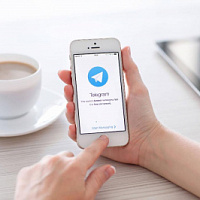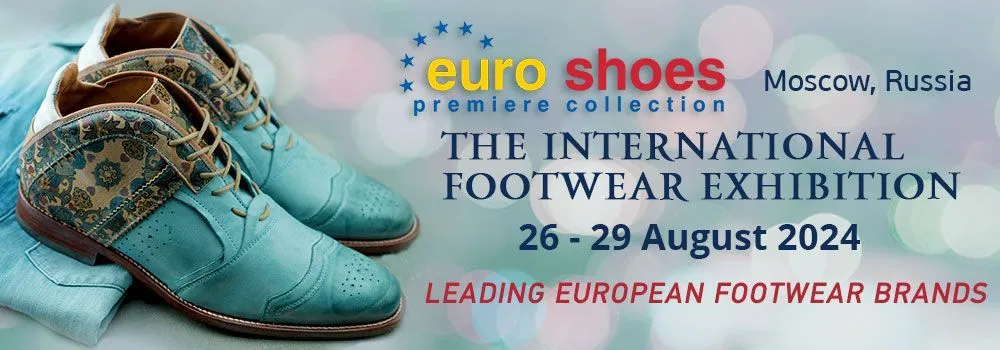
E-mailing: personal approach and unobtrusiveness

With the right approach, emails can increase sales and profits, mistakes will cost money and a good reputation.
Today, more and more fashion retailers tend to communicate with customers personally, addressing almost everyone personally. Hence the desire to develop customer focus, to develop and implement more and more different services, which we wrote about in detail in the previous issue (“Shoe Service Trends”, No. 155, 2018). A personalized approach involves closer, personal communication with the client - through SMS messages, instant messengers, e-mail. E-mailing has long been successfully used in retail as an effective way to increase the loyalty of old customers and attract new ones. Clothing and shoe stores began to work seriously in this direction only a few years ago. Andrei Aksenov, SR expert, director of business development at Intelligent Emails, tells about how to create and carry out electronic mailings, what mistakes should be avoided with e-mailing and much more.
 Andrey Aksenov - Director of Business Development, LLC "Intelligent Emails". Since 2009, the company has been providing professional email marketing services to leading players in the Russian e-commerce market based on the Canadian Ofsys platform. In addition to providing a powerful software tool for newsletters, personalized communication with the customer’s audience, the company offers consulting services in the field of email marketing, including the construction of a turnkey solution.
Andrey Aksenov - Director of Business Development, LLC "Intelligent Emails". Since 2009, the company has been providing professional email marketing services to leading players in the Russian e-commerce market based on the Canadian Ofsys platform. In addition to providing a powerful software tool for newsletters, personalized communication with the customer’s audience, the company offers consulting services in the field of email marketing, including the construction of a turnkey solution.The companies began to do the first, rather primitive commercial e-mail newsletters in Russia, probably with the advent of the Internet, but more or less targeted work with users of electronic mail services began 10-12 years ago. 5-8 began to actively penetrate the fashion market years ago, pioneers of online shopping La Moda, KupiVip began to introduce it first. But only in the last two years everyone understood the significance of e-mail newsletters, and today e-mailing is experiencing a real renaissance: large, medium and small companies - everyone is trying to do it. Another question is how efficiently and professionally.
The increased interest that fashion segment companies show in the development of e-mailing is attributed by market experts to the fact that this tool is personalized communication with the client, ideally as a one-on-one communication method. True, small companies do not always have the opportunity to build personalized communication, because they simply do not collect complete data about their customers. If you write down in a notebook how many pairs of shoes you sold, you are unlikely to take the e-mail and phone number of each client, so that later you will be notified about some of your new promotions and receipts, although in fact everyone should collect complete information about their customers , regardless of the size of the retail business (one small retail outlet, an average store or a large network), because it is not at all costly and not difficult. And then you will have the opportunity to somehow communicate with people, or at least periodically remind them of yourself.
Consider the main tasks that help to solve electronic mailings, and goals that can actually be achieved through e-mail.

Increase customer loyalty
Today everyone is thinking about loyalty, because it’s hard to attract new customers: there are fewer of them, everyone’s incomes have fallen, people make purchases less often. Accordingly, the market has shrunk, and therefore it is very important to first catch a person, and then, if it is possible, to keep him, not to let go of someone else. How can e-mailing help in this case? We give an example from another segment - aggregator sites for the sale of airline tickets. The bulk of people fly somewhere 1-2 once a year, respectively, and buy tickets no more often. Therefore, the ticket service all year must keep the attention of customers in such a way that they do not even think about any other services. You can remind yourself of profitable, "burning" offers - suddenly a person sees the "offer", spontaneously takes and buys, this also happens. Or think about where he could still fly. Therefore, air ticket sellers throughout the year methodically, once a week, send out mailings - in the form of some interesting letter with useful information for people, for example: how to shop in duty-free shops, how to bring your suitcase without an advantage, etc. . - In a word, they give all kinds of practical travel tips, because in a year you can get tired of just one air ticket offer, people can get tired and unsubscribe, it can even annoy someone.
“Useful” mailing lists are actively used by beauty retailers (they like to remind about holidays, birthdays, do not skimp on solid discount coupons for the next purchase and gifts), sellers of goods for home and summer cottages, furniture and decor.
With clothes and shoes, there can also be something similar, for example, advice from stylists on how to combine certain wardrobe items, shoes, bags and hats, about trends and current colors. In shoes, you must take into account the buying cycle: if a woman can buy sneakers quite often is enough, then men usually buy one pair of shoes no more than 1-2 once a year, and usually when the season (summer or winter) stepped on or on the doorstep. Therefore, it is desirable to communicate with women in one way, and with men in another.

Shopping monitoring and analytics
Shoe retailers that actively use e-mail newsletters use this communication tool to inform customers about special offers, promotions, new stores, and remind of unfinished purchases and abandoned baskets. So does the Rendez-Vous network, for example. Information about when the last purchase was made and what the purchase was, is stored by the system, and then it can be used not only to remind the customer that it is time for him to take an interest in new things and buy something new, but also systematize, analyze. Analytics will show what problems exist and why buyers do not reach the end and give up. The reasons can be different - from subjective (something distracted the person, he suddenly changed his mind, etc.), which it is not always possible to influence, to objective (a complicated interface, too long a path from choosing a product to buying, page freezing) payment, etc.) that the company can and should correct.
Customer segmentation
Segmentation of customers (already existing and potential) is, in fact, dividing the entire target audience into interest circles and addressing each circle individually, and preferably to each person personally, but the technologies are not yet so perfect as to work so precisely. Social networks, where people themselves tell all the details about themselves, reveal all the ins and outs, in this regard they have moved further.
The first newsletter is everything
Newsletters should bring a minimum of 10% minimum, and then 15-20% of the turnover, if everything is properly built, experts say e-mail marketing. For advanced companies in this business, they can bring up to 30% of revenue. But on one condition: if everything was done right from the very beginning, not on the knee, but by professionals - full-time e-mail marketers or an outsourced company.
E-mail is a personal communication, so it should be ideally, then the maximum effect will be achieved. But more often it happens this way: a company collects or buys some addresses, some base, and does a mailing list on them with the message “Let's try and send everyone letters about how good we are.” In such cases, people tend to immediately unsubscribe or complain about spam. A complaint about spam is not very good, it leads to a loss of reputation, and then it is more difficult to make mailings, since letters simply will not reach. Mail services block the addresses from which spam is sent, and many simply do not understand this. The technical parameters of the newsletters must be observed, and it must be understood that the newsletter is like a public performance, it’s the same as going on stage and making a concert, you must be aware that you are communicating with living people, and you can either become successful or fail. Therefore, in the case of “Let's try” newsletters, this is a completely wrong message, this is an ill-conceived trial step, the consequences of which will then have to be scooped up for a long time.
The most popular mail service in Russia is mail.ru, it comes first with a wide margin from the rest: 60-70% of users have mailboxes on it. In second place - Yandex, in third - Gmail. All other services - rambler, hotmail, yahoo, etc. - make up a very small percentage, and foreign mail is not at all popular with us.
The first three are the most active in the fight against spam, in setting strict rules for work, so if they are offended (read: if their users complained about spam) to someone who sends out “incorrect”, intrusive letters, then this will become a problem for a long time. Be sure to consider this fact in your work.
The second important point - newsletters love accuracy and accuracy in everything. Let's say you built your e-mailing system, everything works (product offers are sent from time to time), but if you suddenly did something wrong and if your mail was “banned”, then all the time and effort expended will be reset: the company will lose decent money (lost profit), time and a good name, which is not easy to restore in the eyes of postal services and their users. While you will restore your reputation, subscribers can forget about you.

Inexpensive and effective
Regarding other promotion costs, e-mailing is a cheap tool, but at the same time quite effective. Compared with other personalized services that are currently available to retailers, in the west, e-mails are consistently ranked second by source of money after contextual advertising. In fact, working with a loyal audience is the most significant source of revenue for a company with relatively small investments. SMS messages can duplicate information sent by e-mail.
E-mailing Prospects
How will this client communication and promotion tool develop further? Experts are sure that e-mail newsletters will be in demand for quite some time, messengers cannot yet make serious competition to e-mails, although they are actively used. Messengers have their own limitations, which is especially important for fashion - you can’t create your own message in the form of a glossy magazine page, and you can make a letter so beautiful. For visuals, there are many more options. Plus, you get feedback, you can see how people interact with your letter: opened or not opened, read all or only half what links you clicked, this is important, this is serious analytics. You see how a person relates to your communication and, based on this, you can change your tactics. Feedback directly with customers is important for any company, even if the brand does not trade, it can collect information that interests it.
Email newsletters today are in real competition with all polls, often intrusive and inappropriate. Here a person sees an incoming letter and decides whether to open it or not, whether to read it or not. E-mail is such a key, a person’s identifier, today most have their own email account. There is less personal correspondence via e-mail (everything went to messengers), but for communicating with organizations, for shopping online, e-mail is ideal, this is more official communication, although it can be more personalized, but nevertheless, it’s not personal space like a messenger. Unobtrusiveness is one of the benefits of e-mailing.
E-mailing is part of the company's CRM strategy, which consists of various components: copywriting, creativity, ability to work with topics, knowledge of the target audience. Nothing new, but this is the most difficult: to know people from the inside and come up with, offer them something that will interest them in our time, when there are a lot of temptations and offers, information and everything. This is the hardest part.
This article was published in the 156 issue of the print version of the magazine.
| Please rate the article |
Materials on the topic

Coach turned to Big Data analysis and won the interest of a young audience

Working with an active audience on Telegram and VKontakte. Mistakes brands make when moving to new local social networks

Why do we need customer reviews?

How to work in VKontakte and Telegram

WhatsApp and Telegram: Business Opportunities
Popular
 We are ready for active development in the Russian market
Friedrich Naumann, CEO of the Tamaris brand, told Shoes Report about the company’s ambitious plans, business development in Russia and expansion of the retail network, and also shared details about new collections and launches.
We are ready for active development in the Russian market
Friedrich Naumann, CEO of the Tamaris brand, told Shoes Report about the company’s ambitious plans, business development in Russia and expansion of the retail network, and also shared details about new collections and launches.
 Coach turned to Big Data analysis and won the interest of a young audience
American handbag brand Coach has planned the success of its Tabby model among a younger audience, Generation Z, by turning to big data analysis, abandoning traditional and analogue tools, such as human intuition or the ability of any executive to sense “which way the wind will blow,” writes B.O.F.
Coach turned to Big Data analysis and won the interest of a young audience
American handbag brand Coach has planned the success of its Tabby model among a younger audience, Generation Z, by turning to big data analysis, abandoning traditional and analogue tools, such as human intuition or the ability of any executive to sense “which way the wind will blow,” writes B.O.F.
 IDOL updates the concept
The IDOL brand, part of the Melon Fashion Group portfolio, opened the first flagship in an updated concept in the Aviapark shopping center in Moscow.
IDOL updates the concept
The IDOL brand, part of the Melon Fashion Group portfolio, opened the first flagship in an updated concept in the Aviapark shopping center in Moscow.
 Louis Vuitton opens a new factory in Italy
Louis Vuitton has opened its second shoe factory in Italy. After opening the first one in Fiesso d'Artico in Veneto, the LVMH flagship brand has just opened a new production site dedicated to this category of footwear in the industrial zone of Civitano in the Marche region. There is also another brand production facility in Tuscany, where bags and leather accessories are produced, writes fr.fashionnetwork.com.
Louis Vuitton opens a new factory in Italy
Louis Vuitton has opened its second shoe factory in Italy. After opening the first one in Fiesso d'Artico in Veneto, the LVMH flagship brand has just opened a new production site dedicated to this category of footwear in the industrial zone of Civitano in the Marche region. There is also another brand production facility in Tuscany, where bags and leather accessories are produced, writes fr.fashionnetwork.com.
 The Euro Shoes@CAF exhibition will be held in Almaty
From March 11 to 13, the Euro Shoes@CAF (Central Asia Fashion) exhibition will be held in Almaty at the Atakent exhibition complex. The exhibition, which is the largest international event in the fashion industry in Central Asia, will present collections of clothing, shoes and accessories.
The Euro Shoes@CAF exhibition will be held in Almaty
From March 11 to 13, the Euro Shoes@CAF (Central Asia Fashion) exhibition will be held in Almaty at the Atakent exhibition complex. The exhibition, which is the largest international event in the fashion industry in Central Asia, will present collections of clothing, shoes and accessories.
 VAGA SHOES is a new participant in the Euro Shoes premiere collection
The Russian women's shoe factory VAGA SHOES will take part for the first time in the international exhibition of footwear and accessories Euro Shoes premiere collection in Moscow.
VAGA SHOES is a new participant in the Euro Shoes premiere collection
The Russian women's shoe factory VAGA SHOES will take part for the first time in the international exhibition of footwear and accessories Euro Shoes premiere collection in Moscow.
 Euro Shoes will start operating on February 19 in Moscow!
The winter session of the international exhibition of footwear and accessories Euro Shoes premiere collection will be held in Moscow at the Expocenter from February 19 to 22. The organizers promise the presence of all the main participants at the exhibition, as well as new names from Europe, Asia and Russia.
Euro Shoes will start operating on February 19 in Moscow!
The winter session of the international exhibition of footwear and accessories Euro Shoes premiere collection will be held in Moscow at the Expocenter from February 19 to 22. The organizers promise the presence of all the main participants at the exhibition, as well as new names from Europe, Asia and Russia.
 American buyers couldn't buy Birkin bags and sued Hermès
French fashion house Hermès is facing a lawsuit in California from two customers who were unable to purchase exclusive Birkin bags. The fashion house is accused of unfair commercial practices.
American buyers couldn't buy Birkin bags and sued Hermès
French fashion house Hermès is facing a lawsuit in California from two customers who were unable to purchase exclusive Birkin bags. The fashion house is accused of unfair commercial practices.
 John Galliano and Christian Louboutin created the Tabi collection for Maison Margiela
Maison Margiela creative director John Galliano and French shoe designer Christian Louboutin released a shoe collaboration that was included in the Maison Margiela Artisanal spring 2024 couture collection. The design duo created six versions of the Tabi shoe. All shoe models in the collection have a split toe - a characteristic touch of the signature Tabi shoe model of the Maison Margiela brand. And Christian Louboutin gave the shoe its signature red sole.
John Galliano and Christian Louboutin created the Tabi collection for Maison Margiela
Maison Margiela creative director John Galliano and French shoe designer Christian Louboutin released a shoe collaboration that was included in the Maison Margiela Artisanal spring 2024 couture collection. The design duo created six versions of the Tabi shoe. All shoe models in the collection have a split toe - a characteristic touch of the signature Tabi shoe model of the Maison Margiela brand. And Christian Louboutin gave the shoe its signature red sole.
 Why Rendez-Vous and Yandex Lavka released a “bread bag”
Shoe retailer Rendez-Vous announced the launch of a spring collaboration with Yandex Lavka and released a roll that resembles the shape of a woman’s handbag. This “Bread Bag” is presented in the Yandex.Lavka application at a price of 249 rubles. On the product packaging there is a promotional code for 1000 rubles, which can be spent in the Rendez-Vous network.
Why Rendez-Vous and Yandex Lavka released a “bread bag”
Shoe retailer Rendez-Vous announced the launch of a spring collaboration with Yandex Lavka and released a roll that resembles the shape of a woman’s handbag. This “Bread Bag” is presented in the Yandex.Lavka application at a price of 249 rubles. On the product packaging there is a promotional code for 1000 rubles, which can be spent in the Rendez-Vous network.
 Camper has released innovative sneakers - designers
Spanish brand Camper's new Roku sneaker features six interchangeable components to create up to 64 different looks and color combinations. Roku means "six" in Japanese.
Camper has released innovative sneakers - designers
Spanish brand Camper's new Roku sneaker features six interchangeable components to create up to 64 different looks and color combinations. Roku means "six" in Japanese.
 Christian Louboutin presented a collection in a cowboy style
At the Loubi Show in Paris, the French luxury brand Christian Louboutin presented its fall 2024 collection, following the trend - in the style of the Wild West. It included cowboy boots and rhinestone loafers.
Christian Louboutin presented a collection in a cowboy style
At the Loubi Show in Paris, the French luxury brand Christian Louboutin presented its fall 2024 collection, following the trend - in the style of the Wild West. It included cowboy boots and rhinestone loafers.
 Fashion Week takes place in Moscow
Fashion Week takes place in the Russian capital. Events include fashion shows, markets where you can purchase clothes, bags and accessories, and a B2B Showroom for fashion industry professionals.
Fashion Week takes place in Moscow
Fashion Week takes place in the Russian capital. Events include fashion shows, markets where you can purchase clothes, bags and accessories, and a B2B Showroom for fashion industry professionals.
 Fashion trends Fall-Winter 2023/24 for commercial footwear purchases
Permanent contributor to Shoes Report. Elena Vinogradova, an expert in sales and purchases in the fashion business, prepared an overview of the trends for the autumn-winter 2023/24 season especially for us.
Fashion trends Fall-Winter 2023/24 for commercial footwear purchases
Permanent contributor to Shoes Report. Elena Vinogradova, an expert in sales and purchases in the fashion business, prepared an overview of the trends for the autumn-winter 2023/24 season especially for us.
 MSCHF and Crocs launch "Big Yellow Boots"
Creator of the Big Red Boots, Brooklyn brand MSCHF has teamed up with American plastic clog and sandal brand Crocs for another oversized shoe. The new Big Yellow Boots will go on sale on August 9th.
MSCHF and Crocs launch "Big Yellow Boots"
Creator of the Big Red Boots, Brooklyn brand MSCHF has teamed up with American plastic clog and sandal brand Crocs for another oversized shoe. The new Big Yellow Boots will go on sale on August 9th.
 Five rules of professional lighting for a shoe store - something that is relevant in any season
When developing a lighting concept for shoe retailers, it is important to take into account not only the history of the brand, the architectural content of the premises, the target audience of the stores, but also the seasonality of the goods. With the onset of the cold season, client preferences change: bright weightless shoes are replaced by more massive models in discreet dark colors. Despite significant differences in summer and winter collections, the overall philosophy of the brand, its recognition should remain unchanged at any time of the year. Tatyana Ryzhova, an SR lighting expert in fashion retail, has identified five basic rules for a competent lighting concept for a shoe store for readers of the magazine, which will help to present winter assortment to customers in a winning way.
Five rules of professional lighting for a shoe store - something that is relevant in any season
When developing a lighting concept for shoe retailers, it is important to take into account not only the history of the brand, the architectural content of the premises, the target audience of the stores, but also the seasonality of the goods. With the onset of the cold season, client preferences change: bright weightless shoes are replaced by more massive models in discreet dark colors. Despite significant differences in summer and winter collections, the overall philosophy of the brand, its recognition should remain unchanged at any time of the year. Tatyana Ryzhova, an SR lighting expert in fashion retail, has identified five basic rules for a competent lighting concept for a shoe store for readers of the magazine, which will help to present winter assortment to customers in a winning way.
 Bertsy: what to look for when choosing a model
Bertsy and tactical boots are becoming more and more relevant footwear, and not only because of the start of the hunting season. In Russia, there are several dozen enterprises producing this type of footwear. Oleg Tereshin, Deputy Chief Technologist of ZENDEN, told Shoes Report about the differences and features of ankle boots and what you should pay attention to when buying them in specialized retail and online.
Bertsy: what to look for when choosing a model
Bertsy and tactical boots are becoming more and more relevant footwear, and not only because of the start of the hunting season. In Russia, there are several dozen enterprises producing this type of footwear. Oleg Tereshin, Deputy Chief Technologist of ZENDEN, told Shoes Report about the differences and features of ankle boots and what you should pay attention to when buying them in specialized retail and online.
 I doubt and object: how to find an approach to difficult clients?
How good and serene would be the work of a salesperson if the customers were calm, cheerful, always knew exactly what they wanted, and bought, bought, bought! It is a pity that this is possible only in dreams. Therefore, we will not dream, but we will act. Together with Maria Gerasimenko, a permanent author of SR, we understand the doubts and objections of buyers and build a strategy for working with them. Our expert pays special attention to the two main objections of buyers, on which 82% of sales are lost.
I doubt and object: how to find an approach to difficult clients?
How good and serene would be the work of a salesperson if the customers were calm, cheerful, always knew exactly what they wanted, and bought, bought, bought! It is a pity that this is possible only in dreams. Therefore, we will not dream, but we will act. Together with Maria Gerasimenko, a permanent author of SR, we understand the doubts and objections of buyers and build a strategy for working with them. Our expert pays special attention to the two main objections of buyers, on which 82% of sales are lost.
 EURO SHOES presents an updated section of the GLOBAL SHOES exhibition with collections of shoe and bag brands from Asian countries
EURO SHOES premiere collection is expanding. Along with the traditional pool of leading European footwear brands from Germany, Spain, Italy and Turkey, several dozen footwear and bag brands from the Middle Kingdom will be presented in the GLOBAL SHOES section at the Moscow Expocentre from August 29 to September 1.
EURO SHOES presents an updated section of the GLOBAL SHOES exhibition with collections of shoe and bag brands from Asian countries
EURO SHOES premiere collection is expanding. Along with the traditional pool of leading European footwear brands from Germany, Spain, Italy and Turkey, several dozen footwear and bag brands from the Middle Kingdom will be presented in the GLOBAL SHOES section at the Moscow Expocentre from August 29 to September 1.
 Two prominent Russian fashion designers Vyacheslav Zaitsev and Valentin Yudashkin passed away
One after another, two days apart, Vyacheslav Zaitsev and Valentin Yudashkin, outstanding fashion designers, whose work for the whole world was a kind of hallmark of fashionable Russia, left this world.
Two prominent Russian fashion designers Vyacheslav Zaitsev and Valentin Yudashkin passed away
One after another, two days apart, Vyacheslav Zaitsev and Valentin Yudashkin, outstanding fashion designers, whose work for the whole world was a kind of hallmark of fashionable Russia, left this world.
 World Footwear Yearbook: Global footwear production reaches 23,9 billion pairs and is back to pre-pandemic levels
The Portuguese association of shoe manufacturers APICCAPS published the 13th edition of the international statistical bulletin World Footwear Yearbook for 2023, according to which in 2022 the production and export of shoes worldwide increased by 7,6% and 9%, respectively, and the world production of shoes reached 23,9 billion couples and returned to pre-pandemic levels.
World Footwear Yearbook: Global footwear production reaches 23,9 billion pairs and is back to pre-pandemic levels
The Portuguese association of shoe manufacturers APICCAPS published the 13th edition of the international statistical bulletin World Footwear Yearbook for 2023, according to which in 2022 the production and export of shoes worldwide increased by 7,6% and 9%, respectively, and the world production of shoes reached 23,9 billion couples and returned to pre-pandemic levels.
 Rostov footwear brand Novak presented a collection of sneakers and sneakers
In the spring-summer 2023 season, the Rostov-on-Don shoe brand Novak presented a cute collection of sneakers and sneakers for every day. The upper of the shoe is made of genuine leather, suede, nubuck, the sole is made of light EVA.
Rostov footwear brand Novak presented a collection of sneakers and sneakers
In the spring-summer 2023 season, the Rostov-on-Don shoe brand Novak presented a cute collection of sneakers and sneakers for every day. The upper of the shoe is made of genuine leather, suede, nubuck, the sole is made of light EVA.
 How to create selling visual content for online based on the identified unique selling proposition?
What is a USP (unique selling proposition) and what is it for? Why is the USP creation service in great demand among fashion retailers today? How to create a working USP? Answers questions and provides step-by-step guidance on how to define your unique selling proposition and work with it to increase online sales, Tatyana Vasilyeva, an SR expert in the promotion and development of fashion brands.
How to create selling visual content for online based on the identified unique selling proposition?
What is a USP (unique selling proposition) and what is it for? Why is the USP creation service in great demand among fashion retailers today? How to create a working USP? Answers questions and provides step-by-step guidance on how to define your unique selling proposition and work with it to increase online sales, Tatyana Vasilyeva, an SR expert in the promotion and development of fashion brands.
 Shoe educational program: what shoe soles are made of
“What is the difference between TEP and EVA? What does tunit promise me? Is PVC glue? What is the sole of these shoes made of? ”- the modern buyer wants to know everything. In order not to smash his face in front of him and be able to explain whether such a sole suits him in soles, carefully read this article. In it, process engineer Igor Okorokov tells what materials the soles of shoes are made of and what makes each of them so good.
Shoe educational program: what shoe soles are made of
“What is the difference between TEP and EVA? What does tunit promise me? Is PVC glue? What is the sole of these shoes made of? ”- the modern buyer wants to know everything. In order not to smash his face in front of him and be able to explain whether such a sole suits him in soles, carefully read this article. In it, process engineer Igor Okorokov tells what materials the soles of shoes are made of and what makes each of them so good.
 How to set prices that will earn
Some businessmen still confuse the concept of margin with the concept of trade margins and set prices for their goods, guided solely by the example of competitors. No wonder they go broke! Analyst at the Academy of Retail Technologies Maxim Gorshkov gives several tips and formulas with which you can set not only ruinous, but also profitable prices.
How to set prices that will earn
Some businessmen still confuse the concept of margin with the concept of trade margins and set prices for their goods, guided solely by the example of competitors. No wonder they go broke! Analyst at the Academy of Retail Technologies Maxim Gorshkov gives several tips and formulas with which you can set not only ruinous, but also profitable prices.
 Sales of shoes and accessories: effective techniques for business rhetoric
Which speech modules are effective in communicating with potential and current customers of shoe stores, and which are not, Anna Bocharova, a business consultant, knows.
Sales of shoes and accessories: effective techniques for business rhetoric
Which speech modules are effective in communicating with potential and current customers of shoe stores, and which are not, Anna Bocharova, a business consultant, knows.
 We form the salary of sellers: expert advice
“How do you charge your consultants for personal or general sales?” Is one of the most popular questions causing a lot of controversy and gossip on the online forums of retail business owners. Indeed, how to properly form the earnings of sellers? But what about bonuses, where to get a sales plan from, do employees allow them to buy goods at discounted stores? In search of truth, the Shoes Report turned to a dozen shoe retailers, but no company wanted to disclose its motivation system - the process of its development was too complicated and individual. Then we asked four business consultants, and finally became convinced that the topic of seller motivation is very complex, because even our experts could not come to a common opinion.
We form the salary of sellers: expert advice
“How do you charge your consultants for personal or general sales?” Is one of the most popular questions causing a lot of controversy and gossip on the online forums of retail business owners. Indeed, how to properly form the earnings of sellers? But what about bonuses, where to get a sales plan from, do employees allow them to buy goods at discounted stores? In search of truth, the Shoes Report turned to a dozen shoe retailers, but no company wanted to disclose its motivation system - the process of its development was too complicated and individual. Then we asked four business consultants, and finally became convinced that the topic of seller motivation is very complex, because even our experts could not come to a common opinion.
 The whole truth about Bayer. Who is he and how to become one?
Bayer is no longer a new, but still a popular and sought-after profession. It’s fashionable to be a buyer. Buyers are at the origins of the emergence and development of trends. If the designer offers his vision of fashion in the season, then the buyer selects the most interesting commercial ideas. It is on buyers that the policy of sales of stores and what, in the end, the buyer will wear depends on. This profession is surrounded by a magical fleur, often associated with a lack of understanding of what exactly is the work of a buyer.
The whole truth about Bayer. Who is he and how to become one?
Bayer is no longer a new, but still a popular and sought-after profession. It’s fashionable to be a buyer. Buyers are at the origins of the emergence and development of trends. If the designer offers his vision of fashion in the season, then the buyer selects the most interesting commercial ideas. It is on buyers that the policy of sales of stores and what, in the end, the buyer will wear depends on. This profession is surrounded by a magical fleur, often associated with a lack of understanding of what exactly is the work of a buyer.
 Technology Selling Issues
There is nothing worse than meeting the buyer with the words “Hello, can I help you with something?”, Because the seller works in the store just to help. Criticizing this well-established pattern of communication with the buyer, Andrei Chirkarev, business coach for effective sales and the founder of the New Economy project, shares the technology of truly selling issues with readers of Shoes Report.
Technology Selling Issues
There is nothing worse than meeting the buyer with the words “Hello, can I help you with something?”, Because the seller works in the store just to help. Criticizing this well-established pattern of communication with the buyer, Andrei Chirkarev, business coach for effective sales and the founder of the New Economy project, shares the technology of truly selling issues with readers of Shoes Report.
 Fur, and not only: types of lining
In the production of winter footwear, various materials are used that are designed to retain heat and meet the requirements of consumers: natural sheepleather, artificial fur, artificial fur from natural wool and others. All types of lining fur have their own advantages and disadvantages. Let's consider the properties of each of them.
Fur, and not only: types of lining
In the production of winter footwear, various materials are used that are designed to retain heat and meet the requirements of consumers: natural sheepleather, artificial fur, artificial fur from natural wool and others. All types of lining fur have their own advantages and disadvantages. Let's consider the properties of each of them.
 Retail Arithmetic
Before you begin to solve specific problems, you need to find out how accurately all the leaders of your company understand the basic terminology of retail.
Retail Arithmetic
Before you begin to solve specific problems, you need to find out how accurately all the leaders of your company understand the basic terminology of retail.
 How to fire a worker without tears, scandal and trial
Sooner or later, any manager is faced with the need to part with an employee. Properly and on time the dismissal procedure will save the company money, and the boss himself - nerves and time. But why sometimes, knowing that a break in relations is inevitable, we put off the decision for months?
How to fire a worker without tears, scandal and trial
Sooner or later, any manager is faced with the need to part with an employee. Properly and on time the dismissal procedure will save the company money, and the boss himself - nerves and time. But why sometimes, knowing that a break in relations is inevitable, we put off the decision for months?






